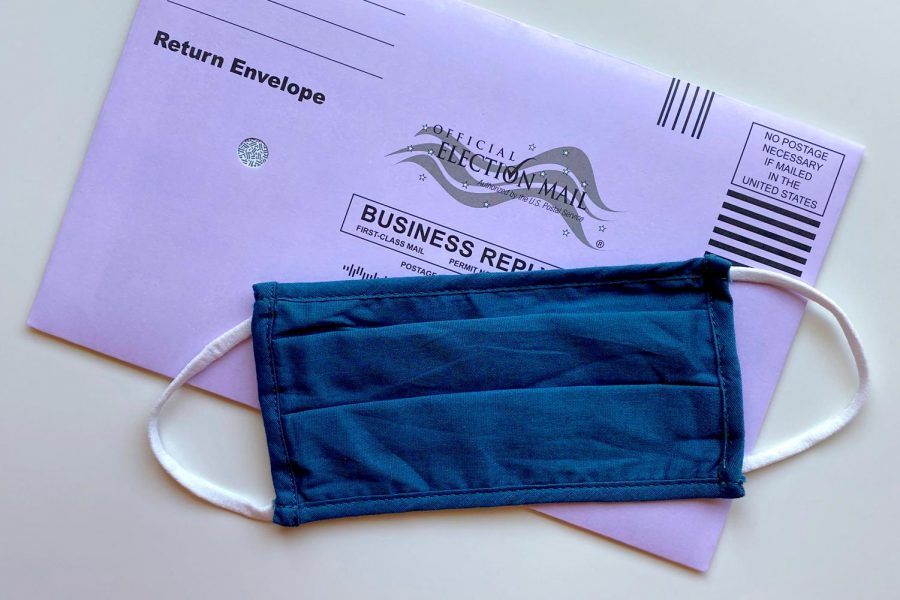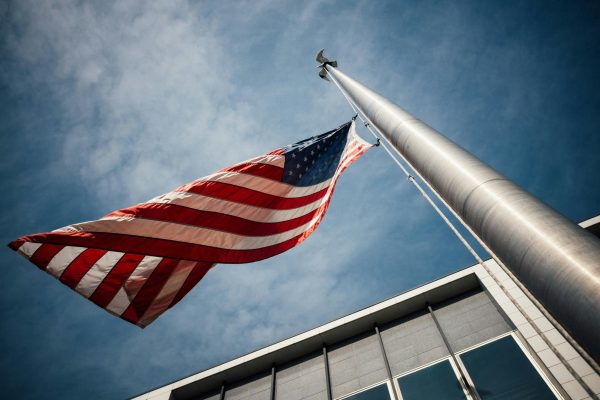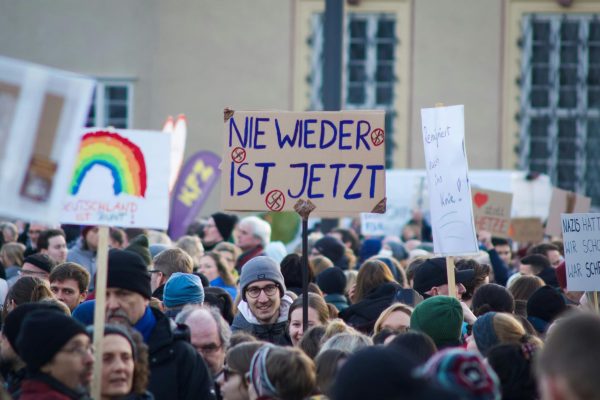Widespread Unrest: Complications with the 2020 US Presidential Election
It is a rare occasion when a presidential election can come to pass uneventfully, especially in a country so diverse in social, economic, and political interests as the United States. There are bound to be complications, especially in a time which is so politically charged as we find ourselves in right now, all of which have culminated to produce one of the most politically fraught elections in US history. This November, US citizens will choose between the Democratic Party nominee, former Vice President Joe Biden and his running mate, Senator Kamala Harris, and the Republican Party’s incumbent President Donald Trump and running mate Vice President Mike Pence. Regardless of the winning candidate, the election is certain to be tumultuous, and has already presented significant barriers to a legitimate outcome.
Firstly, the glaring and ever-present issue of the coronavirus pandemic, has quickly become a political issue, with key stances and opinions towards the virus being divided surprisingly strictly along party lines. The politicization of the virus and its associated regulations may not come as a surprise to the more pessimistic observer; however, it does hold some implications for the Presidential candidates and how their constituents may cast their votes. Poor handling of the virus by the current President in early 2020 seemed to initially give Biden a lead, as voters were deterred by Trump’s handling of the situation on a national level. On the other hand, the virus has also been manipulated by the Republican party as a weapon against Democrats, hailing Trump’s handling of the virus as a reason for his re-election. A nationwide sentiment of fear is possibly one of the reasons Trump won in the 2016 election, during a time of distrust towards immigrants and fear for economic stability, and is now being manipulated once again to pull in moderate voters and encourage them to vote more conservatively. In general, in times of fear and conflict, moderate voters are pushed to vote more conservatively, prioritising stability over progress. The Republican Party has jumped on the coronavirus pandemic as an opportunity to exploit this fear and use it to persuade voters away from Biden, the more liberal candidate.
This can be seen in a lead which Trump took following his initial falling behind, due to a
“rally-around-the flag” effect, a phenomenon in which the president often obtains a high level of support temporarily when an international crisis erupts (CGTN). However, the Democratic Party is not willing to go down so easily, repeatedly using Trump’s handling of the pandemic as a source of criticism and evidence for why voters need a new President in office.
It is still not clear what overall impact COVID-19 has had on the American population in terms of casting votes. Some main factors which remain a point of interest to many Americans are Trump’s policies in response to the pandemic, especially in how they impact the social economy, and disproportionate turnout as a result of the pandemic. African Americans, young people and low-income voters, key supporters of the Democratic Party, are disproportionately affected by the pandemic, and this could have an impact on how these demographics cast their votes.
Some of the consequences of the coronavirus are also showing an impact on voters’ opinions in the 2020 election, especially those experiencing economic hardship. Total nonfarm payroll employment rose by 1.4 million in August, and the unemployment rate fell to 8.4 percent, according to the U.S. Bureau of Labor Statistics. Millions of Americans have found themselves without a source of income during governmentally imposed quarantine, inspiring a plethora of negative emotions which are sure to make themselves present come Election Day.
However, this may not be as easy as in past years; one major consequence of the coronavirus pandemic which must be considered in this election is the issue of voter turnout amidst social distancing and health risks. This brings up the next point of contention in this increasingly complex election period; mail-in voting. Those who have been following this election cycle for some time are certainly aware that the US Postal Service has had a busy past couple of months. The USPS is a government service organized by a board of governors which appoint a postmaster general, in an attempt to distance the organization from politics. However, all governors on the board are appointed by the President and are then approved by the Senate (which currently houses a Republican majority). The current postmaster general, Louis Dejoy, has faced quite a bit of backlash recently from Democrats for cutting overtime, delivery trips, and processing of mail to “sabotage the election.” He originally defended his changes, but has since delayed the changes until after the election.
Republicans have responded to claims by Democrats regarding illegitimacy within the institution, arguing that these changes are necessary to combat the multi-million dollar budget shortfall caused by the rise of email and the internet. President Trump stands opposed to simply injecting the USPS with money, as a bill recently approved by the US House of Representatives would allow, arguing that it is too costly and would result in voter fraud. In truth, it would appear that the postal service as it currently stands is well within its capabilities to handle the incoming wave of mail in ballots, as it does not come close to the nearly 2 billion pieces of mail processed a day during the Christmas season.
Unfortunately, this remains a pressing concern, as each state offers different policies on a spectrum of severity, with some refusing mail-in voting all together due to health concerns, and others posting a ballot to every single registered voter in the state. Since mail-in voting at a scale this large has never been attempted, nothing is certain. However, research does not seem to indicate that fraud is likely. According to a 2017 study by the Brennan Center for Justice, the rate of voter fraud in the US is extremely low, between 0.00004% and 0.0009%.Another key factor in this election which has managed to maintain its relevance for over five months now is the resurgence of the Black Lives Movement, and more specifically its protests and counter protests (and counter-counter protests, and so on). As mentioned previously, fear is often used as a tactic for influencing voters in an election, and this holds true regarding the protests which have taken place across the country in response to a number of killings of black citizens like George Floyd and Breonna Taylor by police forces, and the greater idea of persisting systemic racism. The Republican party has made this a major issue for election, using descriptions like “thugs” and “left-wing mobs” to dehumanize protesters and perpetuate a sense of panic. This has then been used to the advantage of Trump and the Republican party, which can thus present themselves as the voice of peace and reason, charged with maintaining “law and order.” For example, some political ads featured on social media platforms use media coverage of a small number of violent protests and riots that represent only a minority of protests in order to push voters towards the perceived safety of the more conservative and peaceful Republican Party.
The Democratic Party has not remained inactive, however, with both Biden and Trump making a visit to Kenosha, Wisconsin, amidst mass civil unrest following the murder of yet another black man, Jacob Blake, by a police officer. This event, in a time already characterized by mass police scrutiny, quickly became a headline of national importance, drawing the public eye as both candidates made their visits. That both the Democratic and Republican party have made a point of taking a stance on this issue demonstrates how important the protests are. As something which is consistently polarizing even in times of relative calm and when elections are not on the horizon, these protests have made racism and the issue of police reform and brutality into a major point of contention in upcoming elections, something which is sure to be addressed in the Presidential debates.
The issue of polarization is not unique to the current social protests, however, and division between the two political parties has been on the rise for quite some time. The partisan divide refers to the increasingly significant difference between the Republican party and the Democratic party which now transcends politics and encompasses many features of daily life. This division and animosity between the two parties has been on the increase for decades, amplified in part due to the prevalence of social media and cable news. Identifying with one party or the other has become less and less about political opinions and more and more about not wanting to identify with the opposing party. In election years this divide is further dramaticized, with each party presenting the other as a threat to the fundamental integrity of the United States. In truth, political opinion now is actually more homogenous between the two parties, with experts saying that individuals within each party are actually more ideologically similar than in the past.
Candidate selection has also played a part in this divide, with Donald Trump in particular being a widely polarizing figure because of his international reception in the past four years. In general, though, parties tend to select candidates that support values that appeal strongly to their base of support rather than appealing to more centrist voters with a willingness to compromise. Additionally, the COVID regulations and nationwide protests have further pushed voters away from center, radicalizing and polarizing voters towards a more extreme political standing. Further division has been caused by the association of different parties with specific races, religions, economic standings; there is a specific image of a Republican and a Democrat which correlate exactly to how each side sees the other. This extends even into geography, with densely populated urban areas being generally Democratic and rural areas being generally Republican. This, in a similar way to social media, serves to perpetuate the partisan divide by limiting interactions between the two parties, leaving each one in its own bubble of shared opinion.
One final consideration which may be the most important in this election is the threat, especially by incumbent Donald Trump, not to take the results of the election, on the grounds that they are illegitimate due to mail-in voting and some of the other instances previously discussed. Trump has publicly stated that he may not accept the results of the election if they produced a win for Biden. Whether or not you support Donald Trump, these claims hold hugely frightening implications for the nation. On a global scale, a country so highly regarded as the United States having a disputed election result will impact international opinion and recognition of the US for years to come. Never before has there been such a real threat to the legitimacy of the US presidency: without a significant divide in the results of the election indicating a clear winner, the future legitimacy of the United States could be jeopardized.
To conclude, regardless of your political standings, feelings towards the other party, or your ideological position, it is essential that you vote, and vote thoughtfully. Follow the procedures as they are outlined by your state. Make sure that your voice and your interests are being heard and represented as a constituent. This is the first and also the most important step you can take towards establishing a legitimate election. From there, we are all going to be playing a very high stakes game of wait-and-see. If you are a US voter who is uncertain about how to vote in your state, the New York Times has offered this website to walk you through the process.







